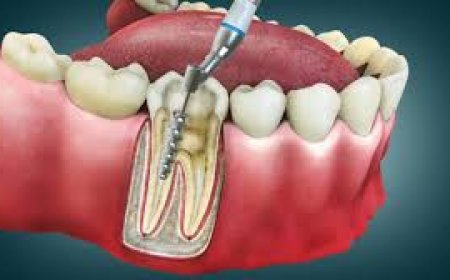How Ranitidine Helps Relieve Heartburn and Acid Reflux

Heartburn and acid reflux are common digestive problems that affect millions of people around the world. Characterized by a burning sensation in the chest, sour taste in the mouth, and discomfort after meals, these conditions can significantly impact a persons quality of life. Among the medications once widely prescribed and available over the counter to manage these symptoms was Ranitidine 150 mgan H2 receptor antagonist (H2 blocker).
This article explores how Ranitidine works, how it relieves heartburn and acid reflux, its uses, benefits, safety concerns, and the current status of the medication.
What Are Heartburn and Acid Reflux?
Before diving into how Ranitidine works, its essential to understand the conditions it was used to treat.
-
Heartburn is a symptom of acid reflux that causes a burning pain in the chest, usually after eating or when lying down.
-
Acid reflux occurs when stomach acid flows backward into the esophagus, irritating the lining and causing discomfort.
-
GERD (Gastroesophageal Reflux Disease) is a more severe, chronic form of acid reflux that can lead to complications like esophageal damage if left untreated.
What Is Ranitidine?
Ranitidine is a medication that belongs to a class of drugs known as H2 (histamine-2) receptor antagonists. These drugs reduce the amount of acid produced by the stomach. Ranitidine was commonly marketed under the brand name Zantac, though many generic versions were also available.
It was used to treat:
-
Heartburn
-
Acid reflux and GERD
-
Peptic ulcers
-
Zollinger-Ellison syndrome (excess acid production)
-
Conditions requiring reduced stomach acid (e.g., gastritis)
How Ranitidine Works
The stomach produces acid to aid digestion. However, excessive acid or acid entering the esophagus causes discomfort. Ranitidine targets the H2 receptors in the stomach lining that are responsible for triggering acid secretion.
Heres how Ranitidine helps:
-
Blocks Histamine Receptors
Histamine is a chemical in the body that binds to H2 receptors in the stomach lining, signaling the production of gastric acid. Ranitidine blocks these receptors, reducing acid secretion. -
Decreases Overall Stomach Acid
By reducing the volume and concentration of acid in the stomach, Ranitidine makes it less likely for acid to flow back into the esophagus, alleviating the main cause of heartburn and reflux. -
Promotes Healing of the Esophagus
In patients with GERD or erosive esophagitis, Ranitidine helps by creating a less acidic environment, allowing inflamed tissues in the esophagus to heal over time.
Benefits of Ranitidine for Heartburn and Acid Reflux
? Fast Relief of Symptoms
Ranitidine generally begins to work within 30 to 60 minutes and provides symptom relief for up to 12 hours, making it suitable for both occasional and longer-term use.
? Nighttime Heartburn Control
Ranitidine was commonly taken before bed to prevent acid buildup and reflux during the nightone of the most uncomfortable times for acid reflux sufferers.
? Can Be Used as Preventive Therapy
Some people took Ranitidine before meals to prevent symptoms, especially when eating foods known to trigger heartburn (e.g., spicy or fatty meals).
? Well-Tolerated
For many years, Ranitidine was known for its good safety profile and relatively few side effects when used as directed.
How to Use Ranitidine for Heartburn
Note: Ranitidine is currently withdrawn or restricted in many countries due to safety concerns (discussed below). If available and approved by a healthcare provider, it should be used as follows:
-
Standard OTC Dose: 75 mg or 150 mg tablets, taken once or twice daily depending on symptom severity.
-
Prescription Dose: Up to 300 mg per day, often in divided doses.
-
Timing: Taken 3060 minutes before meals or at bedtime, depending on symptom patterns.
Always consult a healthcare professional before using any acid-reducing medication.
Safety Concerns and the Global Ranitidine Recall
In 2019 and 2020, several regulatory agencies including the U.S. FDA, EMA (European Medicines Agency), and Indias CDSCO issued alerts about the presence of NDMA (N-Nitrosodimethylamine), a potential human carcinogen, found in some samples of ranitidine.
Key Points:
-
NDMA was found to increase over time and under certain storage conditions.
-
The levels were above acceptable daily intake limits.
-
This led to widespread recalls of ranitidine products around the world.
-
Many health authorities advised consumers to stop using ranitidine and switch to safer alternatives.
As of now, ranitidine remains withdrawn or heavily restricted in most countries.
Ranitidine Alternatives for Heartburn and Acid Reflux
If youre seeking similar relief to what Ranitidine once offered, several effective alternatives are available:
? Other H2 Blockers:
-
Famotidine (Pepcid): Now widely used as a safer H2 blocker.
-
Nizatidine: Less common but also effective.
? Proton Pump Inhibitors (PPIs):
-
Omeprazole
-
Esomeprazole
-
Pantoprazole
-
These drugs reduce stomach acid more strongly than H2 blockers and are preferred for more severe GERD cases.
? Antacids:
-
Calcium carbonate (Tums, Rolaids)
-
Magnesium hydroxide/aluminum hydroxide (Maalox, Mylanta)
Antacids offer immediate relief, but are not long-lasting.
Lifestyle Tips to Complement Medication
Managing heartburn and acid reflux involves more than just medication. Here are helpful tips:
-
Eat smaller, more frequent meals
-
Avoid trigger foods (spicy, acidic, fatty foods)
-
Dont lie down immediately after eating
-
Elevate the head of the bed
-
Maintain a healthy weight
-
Avoid smoking and excess alcohol
Conclusion
Ranitidine was once a leading solution for managing heartburn and acid reflux, offering reliable symptom relief by reducing stomach acid production. It worked by blocking H2 receptors, making it easier for patients to eat and sleep without discomfort. However, due to safety concerns related to NDMA contamination, it has been withdrawn in many countries.
Today, patients have access to safer and more advanced alternatives, such as famotidine and PPIs, along with non-drug strategies to manage symptoms. If youre experiencing chronic heartburn or acid reflux, consult your healthcare provider for an appropriate treatment plan that ensures both symptom control and safety.











































